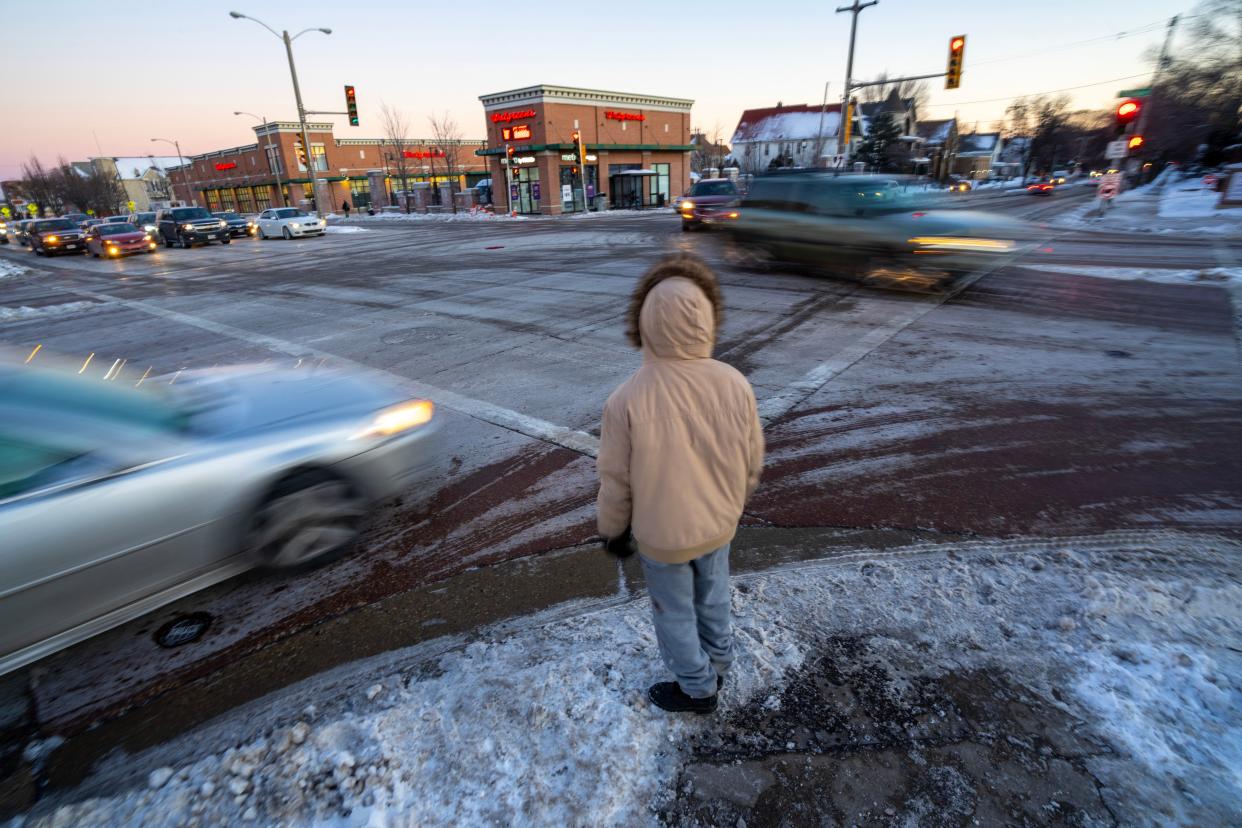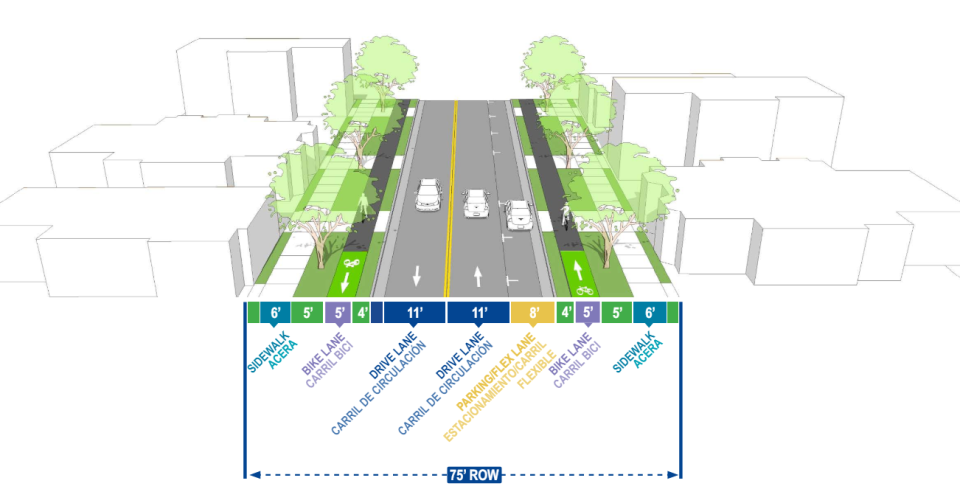Milwaukee's National Avenue will see its auto lanes cut. Other safety changes are coming

One of Milwaukee's largest road projects − featuring a reduction in auto lanes − is proceeding through the design stage, with construction to begin in 2026.
West National Avenue will be converted from four lanes to two lanes between South First and South 33rd streets. The portion between South 33rd and South 39th streets will remain four lanes − at least through the upcoming Interstate 94 widening project with the avenue to be a key alternative route.
Here's what to know about the project, which will cost up to around $40 million and is designed to reduce speeding and reckless driving.
It will be one of Milwaukee's biggest road projects
The project will replace the pavement and make other changes to all of West National Avenue within the Milwaukee city limits. That's 2.6 miles between South First and South 39th streets.
Construction is to run from 2026 through 2028, with one-third of the road to be rebuilt in each of those years, said Jesse Jefferson, a Milwaukee Department of Public Works project manager.
It will cost $35 million to $40 million, with most of that paid through state and federal funds, said Jefferson and Kevin Muhs, city engineer. The city's share of the project hasn't yet been determined.
The avenue, which is part of state Highway 59, was last rehabilitated in 1992 and is showing signs of failure, according to the Wisconsin Department of Transportation.
Most of the street will have its auto lanes cut in half
Most of National Avenue's four-lane portion in Milwaukee, east of South 33rd Street, will have its auto lanes reduced from four to two.
The Wisconsin Department of Transportation, which is overseeing the project, agreed to that change based on the street's traffic counts.
But WisDOT didn't approve the city's request to continue that lane reduction west of 33rd Street.
WisDOT officials expect that portion of National Avenue to see increased traffic as an alternative to Interstate 94 when it's widened from six lanes to eight lanes on Milwaukee's west side.
That $1.74 billion project is scheduled to begin in late 2025 and run for six years. Muhs said it's possible National Avenue west of South 33rd Street could have its auto lanes reduced after the I-94 reconstruction is finished.
That would require a post-construction analysis "after sufficient time has passed for new traffic patterns to normalize on National Avenue and I-94," said Dan Sellers, WisDOT southeast region communications manager.
Protected bike lanes will be added to the avenue
Protected bike lanes will be added to the rebuilt National Avenue. They will be screened from auto lanes by being built at the sidewalk level with curbs serving as barriers, Jefferson said.
New trees − more than 100 are planned − will provide an additional level of protection from cars, he said.
The bike lanes will be differentiated from the sidewalks with different colored materials, Jefferson said. Also, a foot-wide strip will serve as a buffer.

Raised crosswalks, other safety measures are planned
Other measures to improve safety include raised crosswalks at National Avenue intersections that have traffic signals, Jefferson said.
Those raised crosswalks will be similar to those recently added on West Walnut Street between North 12th and North 28th streets.
They use built-in slopes on the traffic lanes that tend to force cars to slow down as they approach the intersections, Jefferson said.
Department officials are working on other changes, including creating more space at bus stops, Muhs said.
"It isn't just about the bikes," he said. "It's the pedestrian experience in general getting better."
Wisconsin Bike Fed pleased with the planned changes
Wisconsin Bike Fed members hope to see the lane reduction continue west of South 33rd Street. The group is pleased with the other planned changes.
"Thanks to the great work, creativity, and willingness to collaborate on the part of both City and WisDOT staff, as well as the support of engaged advocates and dedicated elected officials, it looks like we will get an impressive change to the road," said Jake Newborn, assistant director.
"We are excited to see this project happen," Newborn said, "and it is a testament to the fact that our roads are for people, and our leaders can make changes that will save lives and build a strong community."
National Avenue among a series of similar projects
National Avenue's planned changes are among a series of Milwaukee road projects which are reducing auto lanes, adding protected bike lanes and making other safety improvements.
A redesigned Michigan Street will swap some car lanes for protected bike lanes between North Eighth and North Water streets.
Construction on that $2.5 million project is to begin this fall − pending a final design based partly on community input. That work should be done by November.
West Villard Avenue will be reconstructed between North Sherman Boulevard and North Teutonia Avenue, with additional work between Teutonia Avenue and North 20th Street.
That project will include protected bike lanes, wider sidewalks and a pedestrian plaza. Construction is expected to begin in 2027, with a $14.3 million federal grant to cover the project costs.
Also, President Joe Biden visited Milwaukee in March to announce $36.6 million in federal funding to reconstruct a 2.6-mile stretch of Sixth Street, between West North and West National avenues. That project is to begin in 2027 and be completed in 2029.
Plans call for reducing the number of vehicle lanes, planting trees, and potentially adding fully separated bike lanes as well as transit lanes.
Tom Daykin can be emailed at tdaykin@jrn.com and followed on Instagram, X and Facebook.
Subscribe to get the BusinessWatch email newsletter.
This article originally appeared on Milwaukee Journal Sentinel: This Milwaukee road will have its auto lanes cut, and bike lanes added


